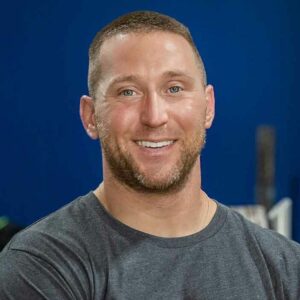When we think about the golden standards in baseball, we think about what each player wants and needs to develop physically. Every baseball wants to get bigger, stronger, faster, to improve their throwing velocity, exit velocity, bat speed, and running speed. These are the metrics we aim to improve in the weight room to transfer onto the playing field. In today’s newsletter, I want to outline a few of the physical components that baseball players need to address and work on to see improvements in the metrics on the baseball field.
1) Mobility
Mobility is defined as the ability to achieve a desirable position. Let’s use throwing for example. The arm has to move through external rotation (layback phase of throwing) in order to load the arm in a more effective position to create velocity prior to delivery. When we assess a baseball player’s arm, we want to see at least 90-100 degrees of external rotation at the shoulder to consider it normal range of motion. Having assessed hundreds of baseball players’ shoulders over the years, I’ve seen everything from normal to both extremes, meaning significantly less than or more than 90 degrees of layback.
There are numerous reasons as to why a baseball would have less than 90 degrees of normal range of motion. They may lack adequate soft tissue length/ extensibility due to stiffness/tightness from overuse, lack of mobility, improper training, improper throwing program, etc. A baseball player with more than 130-140 degrees of layback would be considered hypermobile, meaning they possess extreme joint range of motion and have the ability to contort their body in extreme positions. This can be used to their advantage to generate higher velocity outputs, but it can also lead to greater risk of injury.
They have to bridge the gap between performance and health because we don’t want to attempt to take away something that makes them successful on the field, we also don’t want to place them at greater risk of injury to take them off the field. Bottom line, you can see the difference in the two possible outcomes of how a baseball player throwing shoulder functions and understand there is a drastically different approach in how we train both athletes to enhance performance and minimize injury risk. This is why I’m so adamant about there being no such thing as a “one size fits all approach.” There are certain things we might do with a stiffer athlete that could lead to a hypermobile athlete getting worse and vice versa.
If you take a baseball player with 130-140 degrees of layback and attempt to give them more range of motion, we may be making them worse by making them more hypermobile, in turn making them more unstable where they lack stability and control in their body. This is the exact opposite of what they need to address. We take the other baseball player who has 90-100 degrees or less of layback, we want to improve their range of motion through specific interventions like manual therapy, soft tissue work, positional breathing, and targeted mobility drills to improve their ability to get into better positions.
This is why I’m such an advocate for assessing each athlete. They are all unique in their body types and require their own individualized approach to strength and conditioning programs. If we guess and don’t assess, we’re only doing our athletes a disservice and potentially leading them down a path that could lead to negative outcomes. The goal is to always mitigate risk factors, keep athletes healthy and perform at higher levels.
Interested?
If you’re interested in getting an assessment and performance testing to get the right path toward developing athleticism, health, and building a sustainable playing career, contact us at support@
I hope this was helpful. If you have any questions please contact us.
Thank You
Kip Steingart, Owner
Top Performance Strength


